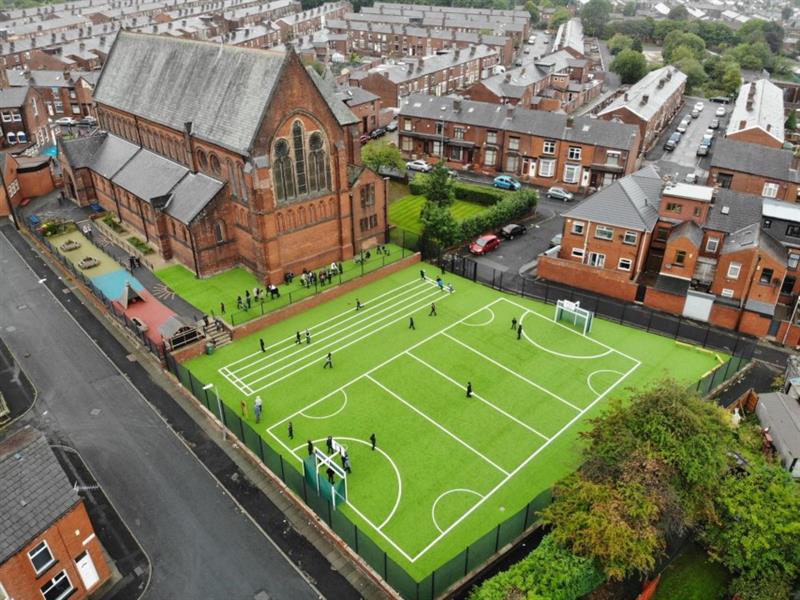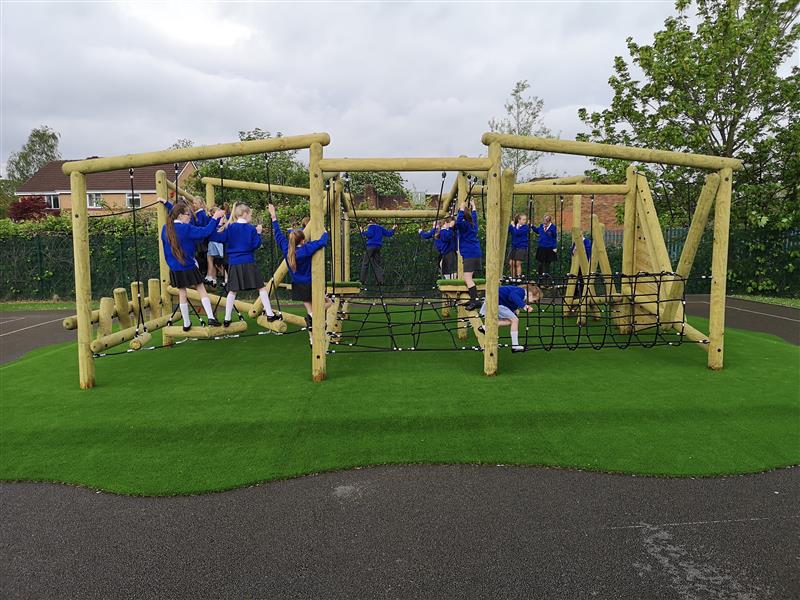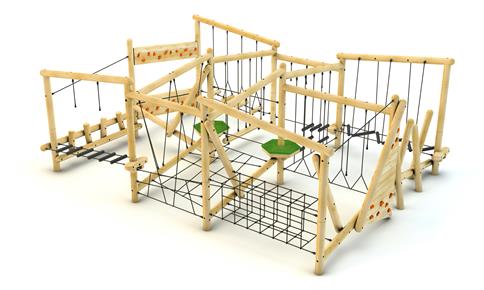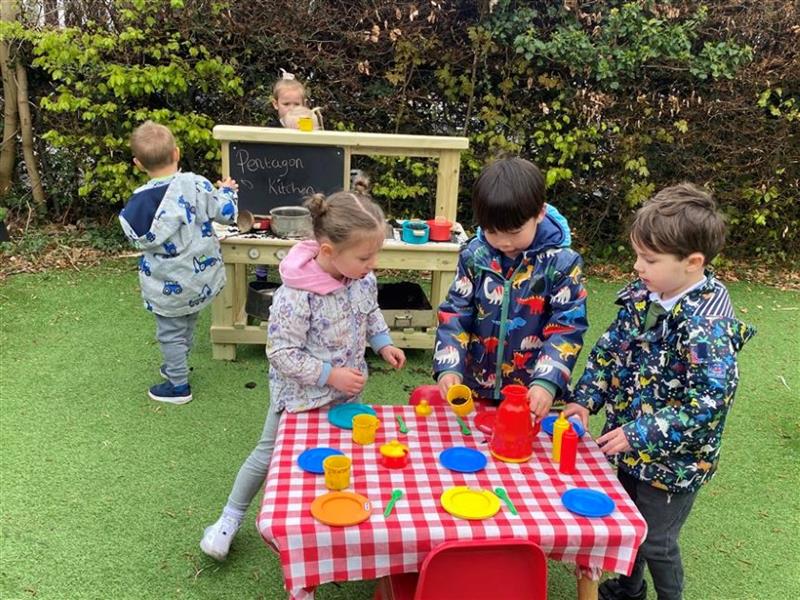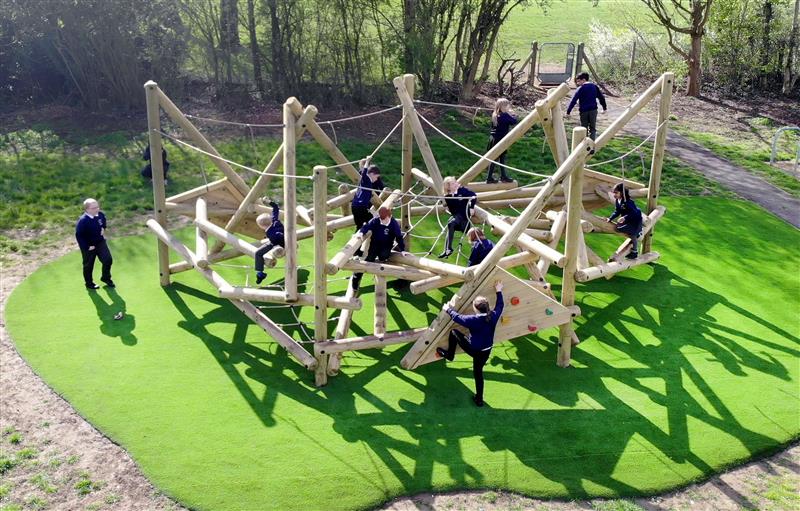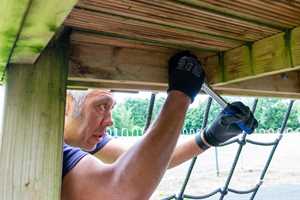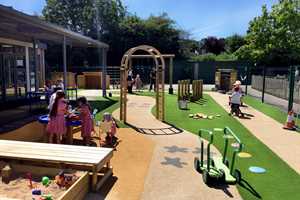Playground Design
The Importance of Investing in and Developing School Playgrounds
Providing children with opportunities for play is extremely important. Play allows pupils to freely express themselves and their feelings, children gain confidence when dealing with different environments and they make discoveries that we as teachers cannot possibly plan for.
During the past 25 years, Pentagon Play have partnered with over 15,000 schools establishing safe yet effective outdoor playspaces where children can engage freely in active learning experiences.
Our expert team have the knowledge to create school playgrounds which promote exploration, physical activity and positive social interactions. We carefully analyse available space, consider patterns of movement and select the correct equipment to match learners needs, utilising industry leading playground equipment.
Additionally, our innovative playground equipment transforms playgrounds into unique play environments, enhancing children's play experiences. Creating the best playground to suit a particular space can have huge rewards for a school.
Why do we need School Playgrounds?
Nineteenth-century educationalists such as Wilderspin and Froebel ensured that the provision of a playground or schoolyard in primary schools in England and Wales had become ‘normal’ by the mid-1850s, and I believe it would be rare to find a primary school in the UK today that does not have a playground/outdoor space. These outdoor learning environments are essential spaces that promote safety, engagement, and inclusivity for children.
Most of us have vivid memories of playground activities which can stay with us for a lifetime. Traditional play during breaktimes can impact educational development across the primary curriculum. Playtime games can aid the development of basic knowledge and skills in curriculum subjects as well as memory skills, communication, hand-eye coordination, and physical dexterity.
Benefits of Outdoor Play
Outdoor play is essential for children’s physical, emotional, and social development. It provides numerous benefits, including improved physical health and well-being, enhanced cognitive development and creativity, and better social skills and relationships. When children engage in outdoor play, they have the opportunity to explore and discover their surroundings, which fosters a sense of curiosity and wonder.
Regular outdoor play can also boost children’s confidence and self-esteem. As they navigate different play equipment and interact with their peers, they develop problem-solving and critical thinking skills. Moreover, outdoor play can significantly improve mental health by reducing stress levels and promoting a sense of freedom and joy.
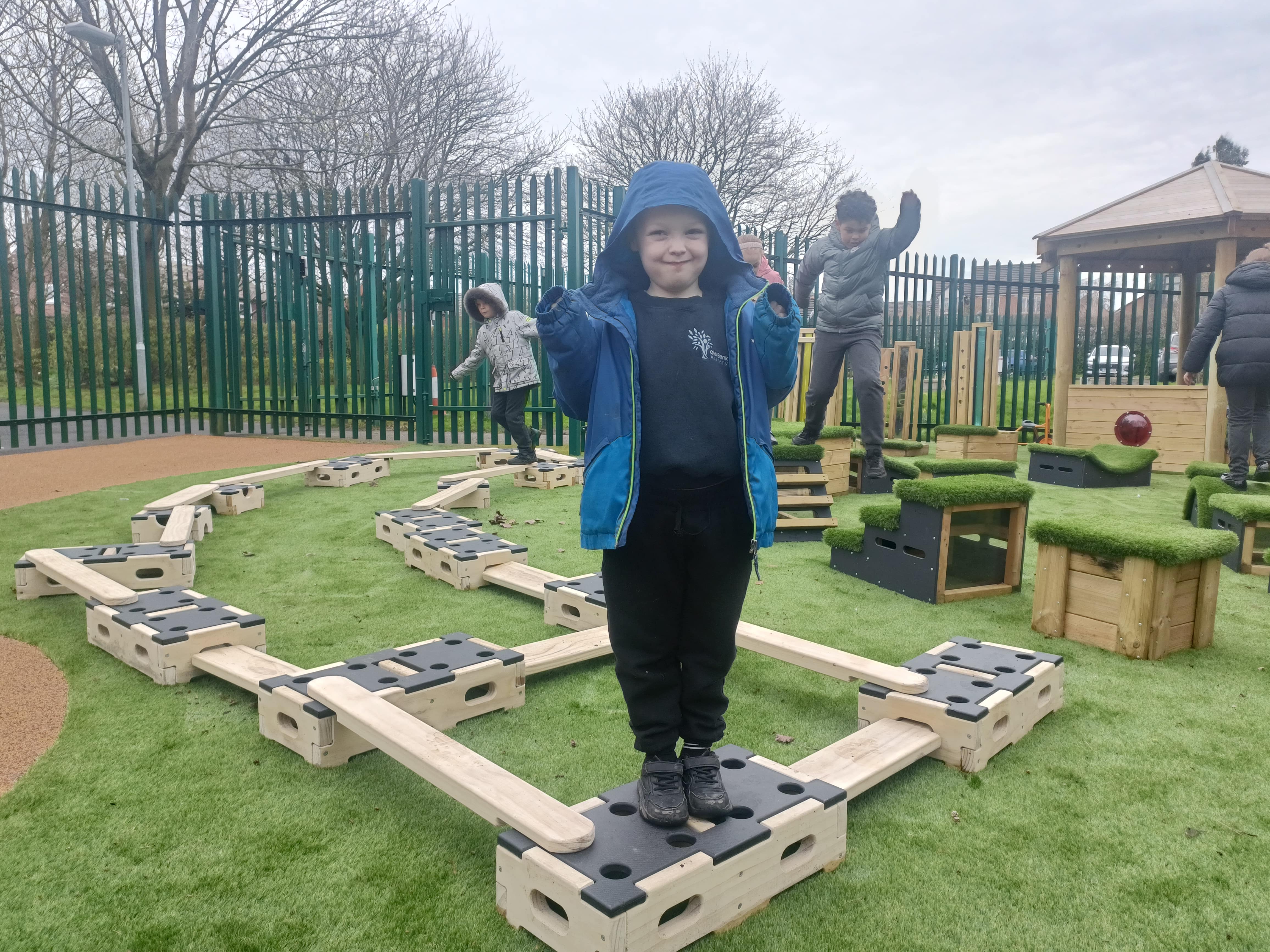
Encouraging outdoor play helps children develop a lifelong love for physical activity, which can reduce the risk of obesity and related health problems. Additionally, outdoor play nurtures essential life skills such as teamwork, communication, and conflict resolution, preparing children for future challenges.
Traditional Playtime Games
Traditional playground games tend to involve rich and varied use of language and with oracy now being placed at the forefront of the English National Curriculum, playgrounds are vital for daily speech and interaction. School playgrounds are a place for verbal exchanges between adults and children, often in a playful tone. Speech can take the form of repetition, reinforcement and pattern.
I can certainly remember chanting tongue twisters, taking part in clapping games such as ‘A Sailor went to Sea, Sea, Sea' and chanting rhymes such as:
‘I Scream
You Scream
We all scream
For Ice Cream.'
Rhythm, repetition, alliteration and assonance can all be found in children's playground speech which are the essential skills of poetry and storytelling. Traditional playground games and enjoyable interactions help young children to gain knowledge and skills to use language in all its rich variety.
Prioritising Play
Young children learn best by playing because they can actively explore, discover, try things out and practise new skills. Practitioners can support children's natural desire to play encouraging them to wonder and discover, building upon an ever-increasing knowledge base.
When you observe a child playing outdoors you often notice feelings of excitement and enjoyment. Play is often self-directed and pupils can engage freely and spontaneously, remaining engaged for long periods of time. Play can provide children with the right level of active challenge, holding attention without providing strong feelings of frustration.
Imaginations are often most active during outdoor play where objects can take on new meanings: grass, mud and seeds become treasures and ingredients.
Product Spotlight
When children step into school playgrounds they want to feel a sense of mystery and adventure, they want to push and test themselves, yet they also need to feel a sense of security and protection. It is important to offer some choices. A playground needs places where children can socialise with each other and also spaces for relaxation and quiet solitude.
Children thrive in a playground environment which provides a range of experiences. A well-planned playground project can provide resources and inspiration for designing and building such diverse and engaging playgrounds. Pentagon Play are experts at creating different learning zones providing a balance of opportunities.
When working in collaboration with schools, Pentagon Play strive to give children some control over their playground space. If pupils can make some decisions, look after their grounds and personalise their choices a sense of pride and citizenship develops. As learners feel like they are making a positive contribution to school life and decision making, self-esteem can grow.
School Playground Expectations
The Department for Education – Development Matters document (2023) offers guidance for Early Years Education. The guidance states that ‘a well-planned learning environment, indoors and outdoors, is an important aspect of pedagogy.’ Pentagon Play can help to create an outdoor space which reflects key values and philosophy.
Each individual school will have a vision for their playground whether it be to create a space for children to release energy, to encourage collaborative play, promote language skills or to prioritise problem solving.
The document also states that practitioners should, ‘encourage positive interaction with the outside world, offering children a chance to take supported risks, appropriate to themselves and the environment within which they are in.’
School playgrounds provide children with a change from the indoor classroom. Often children can roam freely, select their activity, make noise and test their physical skills.
School playgrounds should continually engage children in activities that physically and mentally challenge their abilities and allow them to take some risks. A Pentagon Playground will always ensure that our school playground equipment and products are age and size appropriate.
Our fantastic impact-absorbing safety surfacing options including Artificial Grass cushions areas surrounding play equipment allowing children to feel comfortable and safe.
By providing children with challenging school playground equipment and obstacles this can actually reduce the number of serious playground accidents as children naturally become risk aware and learn to manage the potential risks they face.
Our playground equipment for schools is designed to meet individual needs and budget considerations, offering a diverse range of equipment suitable for different age groups and abilities.
Development Matters curriculum guidance urges schools to ‘offer children many different experiences and opportunities to play freely and to explore and investigate. Make time and space for children to become deeply involved in imaginative play, indoors and outdoors.’
Outdoor play can allow children to take the lead. Practitioners can look for opportunities to extend children’s play, comment on conversational leads and encourage pupils to explore answering their own questions.
A Selection of Popular Playtime Products
One issue that I have observed when visiting schools is that football tends to dominate the playground, often with more than one game happening in the same space at the same time!
Pupils tend to spread out when playing football, more than half of the hard surface area of school playgrounds can be occupied by football games and usually less than a quarter of the school population are playing the game.
Football is a fast-moving activity which can make movement around the playground hazardous. Boundary lines painted onto the floor or the use of plastic cones may be a short-term fix as play usually extends beyond the lines, spreading and taking over all of the available space.
Some pupils want to play chase games or may choose to play with school playground equipment such as hoops, beanbags and skipping ropes. In my experience these different forms of play tend to overlap the same space which can lead to minor accidents and arguments. Some pupils can feel squeezed into a smaller space, unable to choose their desired activity.
A Pentagon Play Multi Use Games Area (MUGA) creates a boundary with the presence of rigid mesh fencing. Fencing actually stops the ball, containing the movement of the game and enables play to continue without disturbances.
Schools can decide where and how big the game area in the playground should be. A MUGA is also a fantastic space for Physical Education lessons and can help to encourage children to try new sports.
Taking Away the Walls
When we take away the classroom walls children tend to have a much larger area to explore. School playgrounds are a place for discovery within nature.
Pupils can observe birds flying overhead, watch their breath on cold days, follow the ladybirds and sit under the shade of a tree.The changing natural environment allows children to experience falling leaves, frost, flowers blooming and the force of strong winds.
Sand, grass, mud, trees and plants play an important role in outdoor spaces, helping children to learn about and respect the natural world around them. I feel it is important to encourage children's active exploration of the natural environment, particular in schools located within urban areas.
A Pentagon Mud Kitchen is an essential piece of school playground equipment which encourages children to dig, make mud pies and create their own recipes and imagined worlds.
A Mud Kitchen is a welcome addition to all school playgrounds, allowing children to experience nature in meaningful and direct ways. If space is an issue, Pentagon offer a variety of Mud Kitchens with different features and to suit different budgets.
Each product promotes creativity and curiosity whilst promoting plenty of movement. Pupils will walk, bend and stetch as they gather materials which they will the learn to manipulate building hand-eye coordination and fine motor skills.
Providing Opportunities for Lightbulb Moments
Have you ever been struggling to figure out a solution to a problem and all of a sudden, the solution just hits you? You start to feel a sense of motivation, relief, pride and excitement as you rush to implement your new idea. That special feeling is a "lightbulb moment" and they play a vital role in a child's development.
As children explore their surroundings, they are constantly taking in new information about the world around them. This concept is especially true in the playground, as kids are filled with curiosity to explore the outdoors around them.
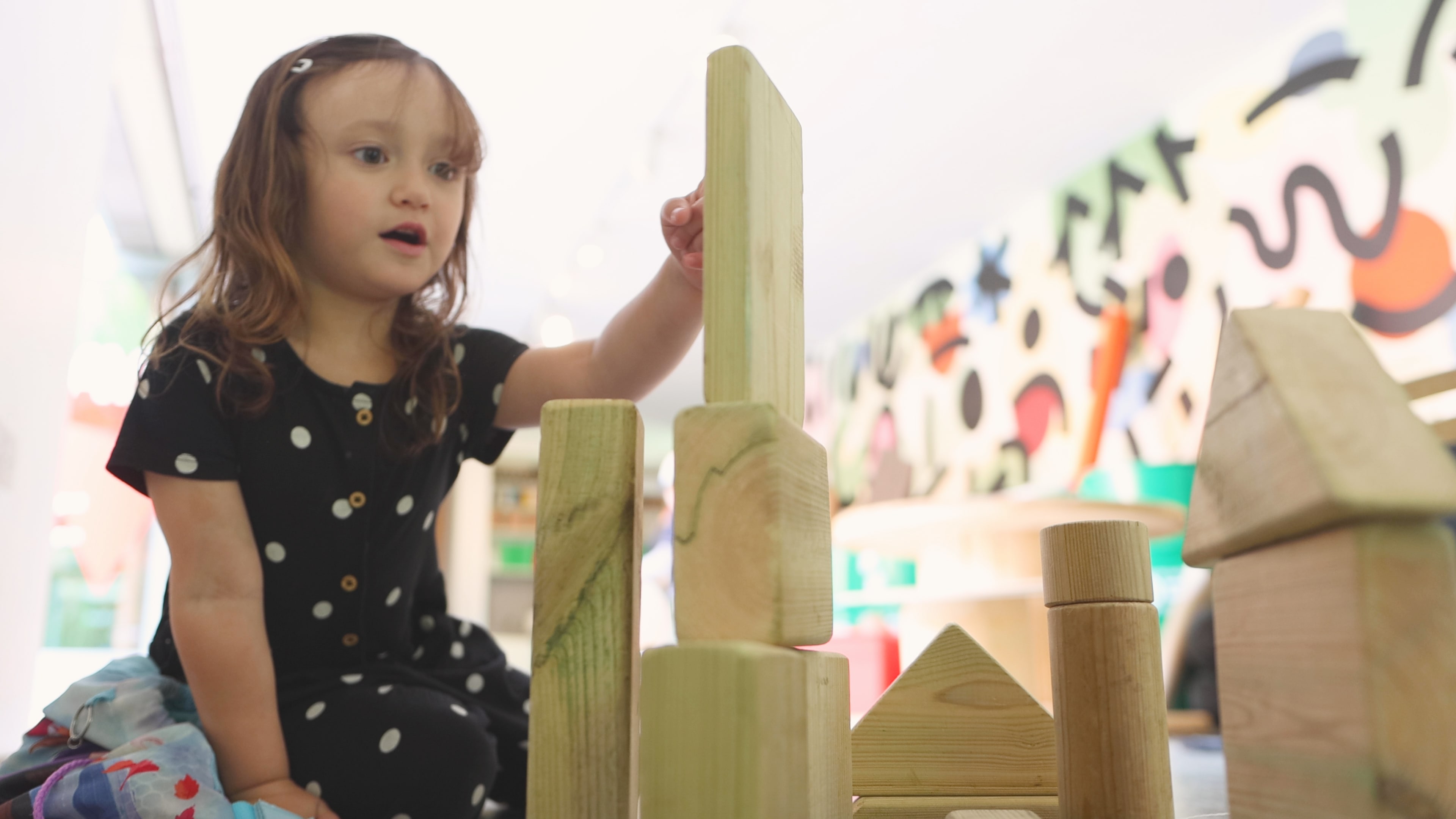
Incorporating play equipment that challenges children mentally is a great way to create an environment for promoting lightbulb moments. Equipment like the Play Builder sets encourages children to take control of playtime by moving the pieces around to create a variety of exciting and unique activity courses.
You could create an area which has a board full of ideas, puzzles and challenges for children to try and complete. As children tackle these tasks, they'll be working on their cognitive and problem solving skills to find solutions.
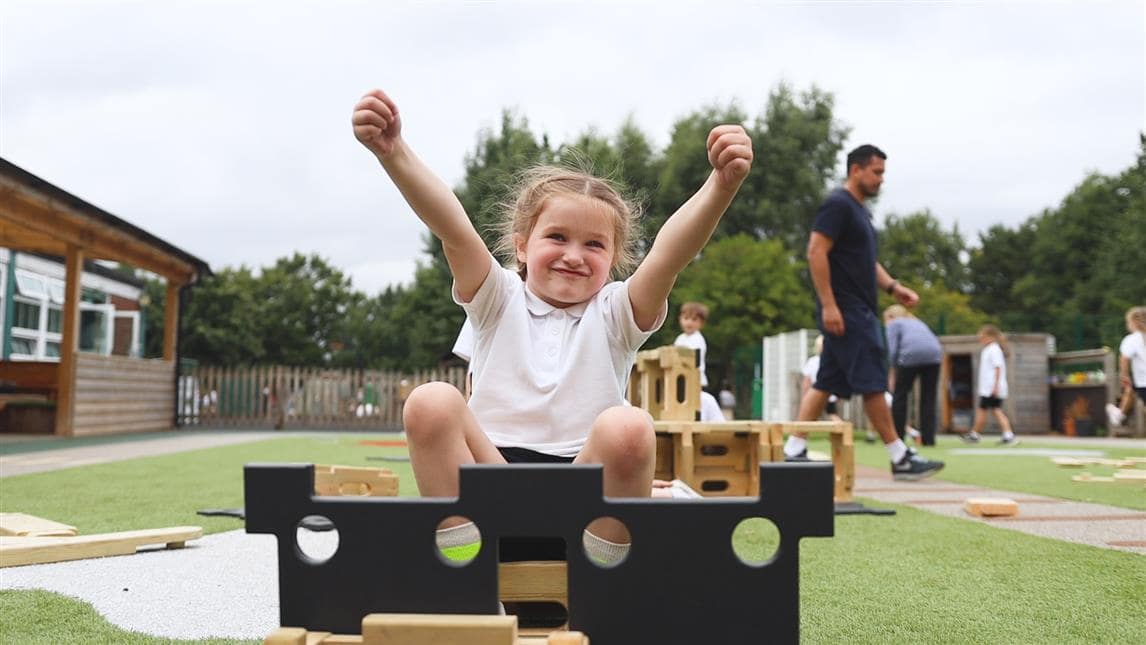
Once they uncover the solution, the child will be hit with lightbulb moment and will be flooded with a variety of positive emotions. Not only will they have learned how to conquer your challenge, but they'll also be having fun and improving a variety of cognitive and physical skills due to the nature of the Play Builder sets.
Play equipment like the Bouldering Climbing Wall will naturally encourage children to overcome an active challenge that is sure to excite them. As they navigate their way through the challenge, the lightbulb moment will hit them as they start to understand how to manoeuvre their body around this amazing structure.
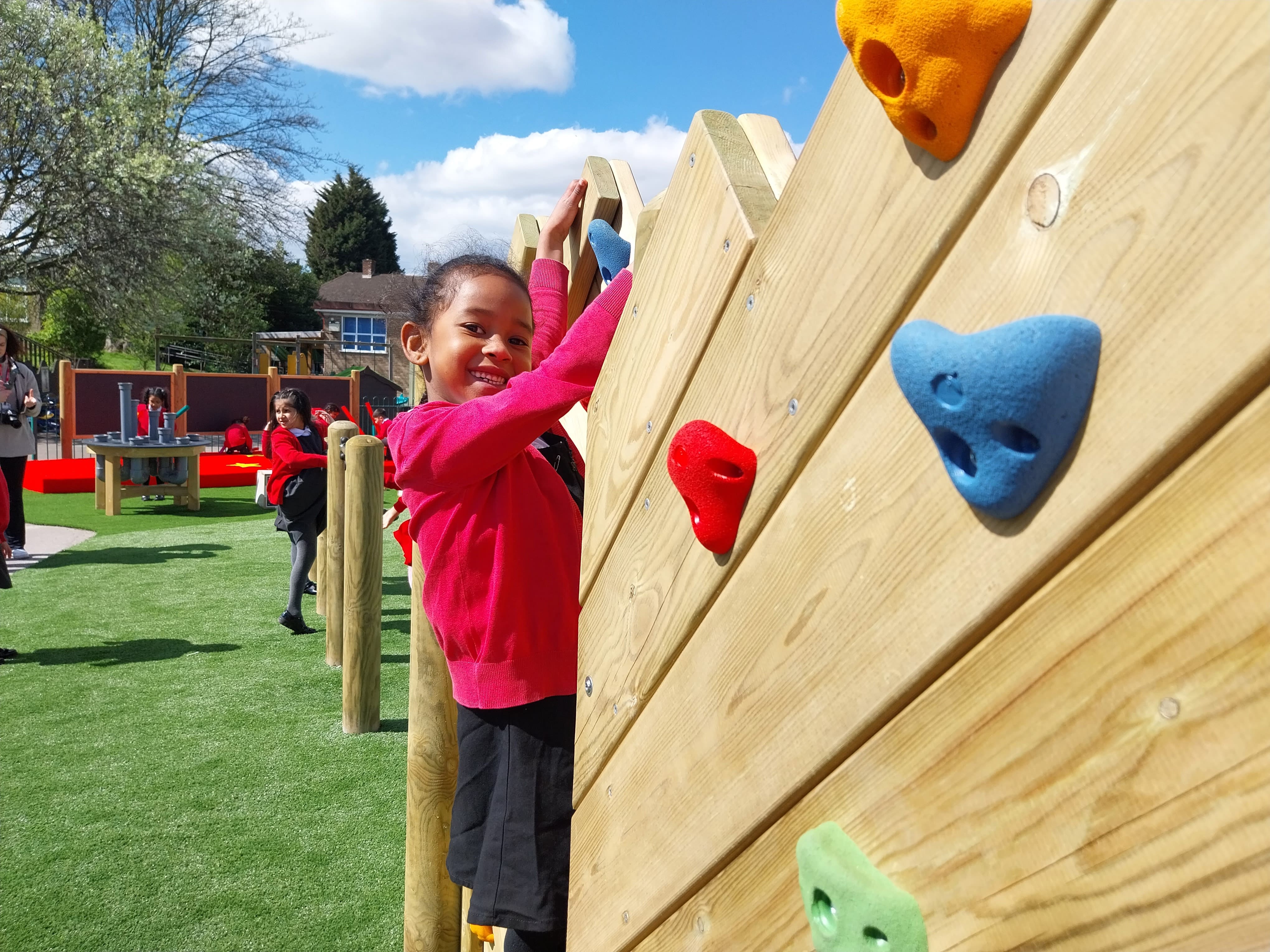
The opportunities are truly endless. If you're wanting help with how your playground can become a haven of lightbulb moments, speak to one of our friendly playground consultants and start crafting the perfect playground for inspiration and problem solving.
Physical Playground Play with High Quality Playground Equipment
An outdoor playground space offers children freedom of movement and greater physical challenges than an indoor space can provide. When schools champion outdoor play, they are allowing children to enjoy a range of movements and helping pupils to develop healthy, lifelong habits.
School playgrounds encourage children to experiment with their bodies and practice important physical skills. Pentagon’s range of playframes ensure children can experiment with different heights, they accommodate groups of children of varying ages and therefore play never becomes predictable.
The open-ended nature of the playframe range provides children with plenty of opportunities to use their imaginations and satisfies their curiosity.
A large climbing structure such as the impressive Grizedale Forest Circuit is often the focal point of the playground. This climber includes numerous features such as: climbing walls, a tunnel, a tightrope, swinging logs and scramble nets.
Pupils of various abilities can access different levels, finding their own ways of safely moving up and down the structure. This circuit supports children’s upper and lower body development. Balancing skills are strengthened as children learn to hold themselves and travel without falling.
Ever increasingly, schools are recognising the potential of their playground spaces. A school playground should be a place where children want to be. Pupils need to feel happy, healthy and free to play with friends.
Attractive, welcoming school playgrounds that have been designed to suit the needs and interests of pupils can make a huge difference to learning. Improving a school playground may not happen all at once, schools may have a long-term plan which will see a playground develop over time.
Pentagon Play are here to help you to discover the kinds of experiences you want pupils to have and work out the best options for making purposeful change that maximises play value.
Creating Outdoor Classrooms
Outdoor classrooms are an innovative way to extend the learning environment beyond the traditional classroom walls. By incorporating outdoor learning spaces, schools can enhance the curriculum with hands-on, experiential learning experiences that engage students in new and exciting ways.
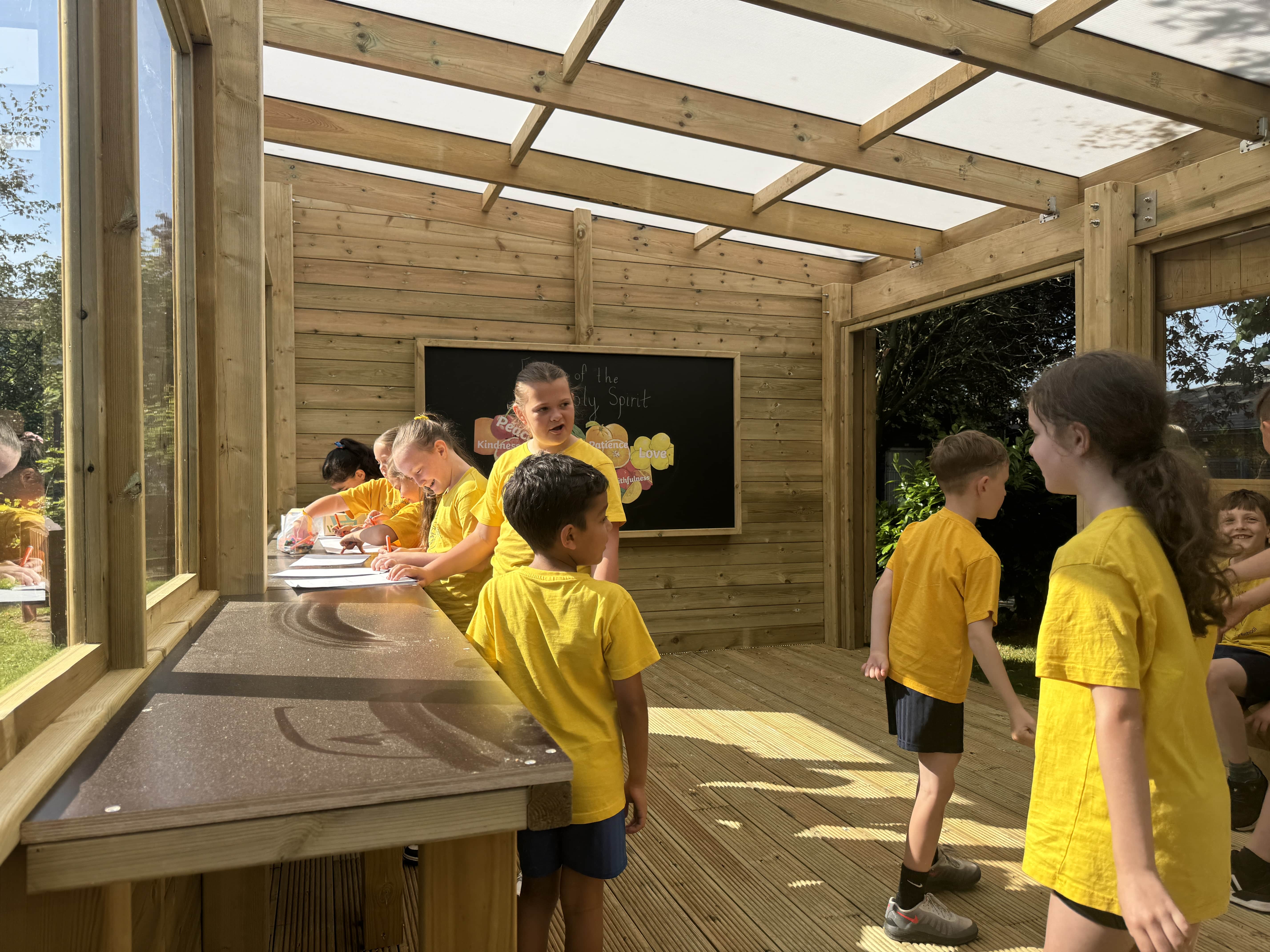
These outdoor classrooms promote environmental awareness and sustainability, fostering a sense of responsibility and connection to the natural world.
Outdoor classrooms can take many forms, from nature-based learning areas like gardens and wildlife habitats to outdoor art and music spaces with murals and instrument stations.
STEM areas, such as water play stations and construction zones, provide practical learning opportunities, while literacy and numeracy areas, like outdoor reading nooks and math trails, support academic development.
.jpg)
By creating outdoor classrooms, schools can improve student engagement and motivation, support diverse learning styles and abilities, and foster a sense of community and social responsibility.
These unique learning environments encourage creativity, critical thinking, and personal growth, making education a more dynamic and enjoyable experience.
Maintenance and Support
Regular maintenance and support are essential to ensure the longevity and safety of school playground equipment. This includes routine inspections and repairs to identify and address any issues with the play equipment.
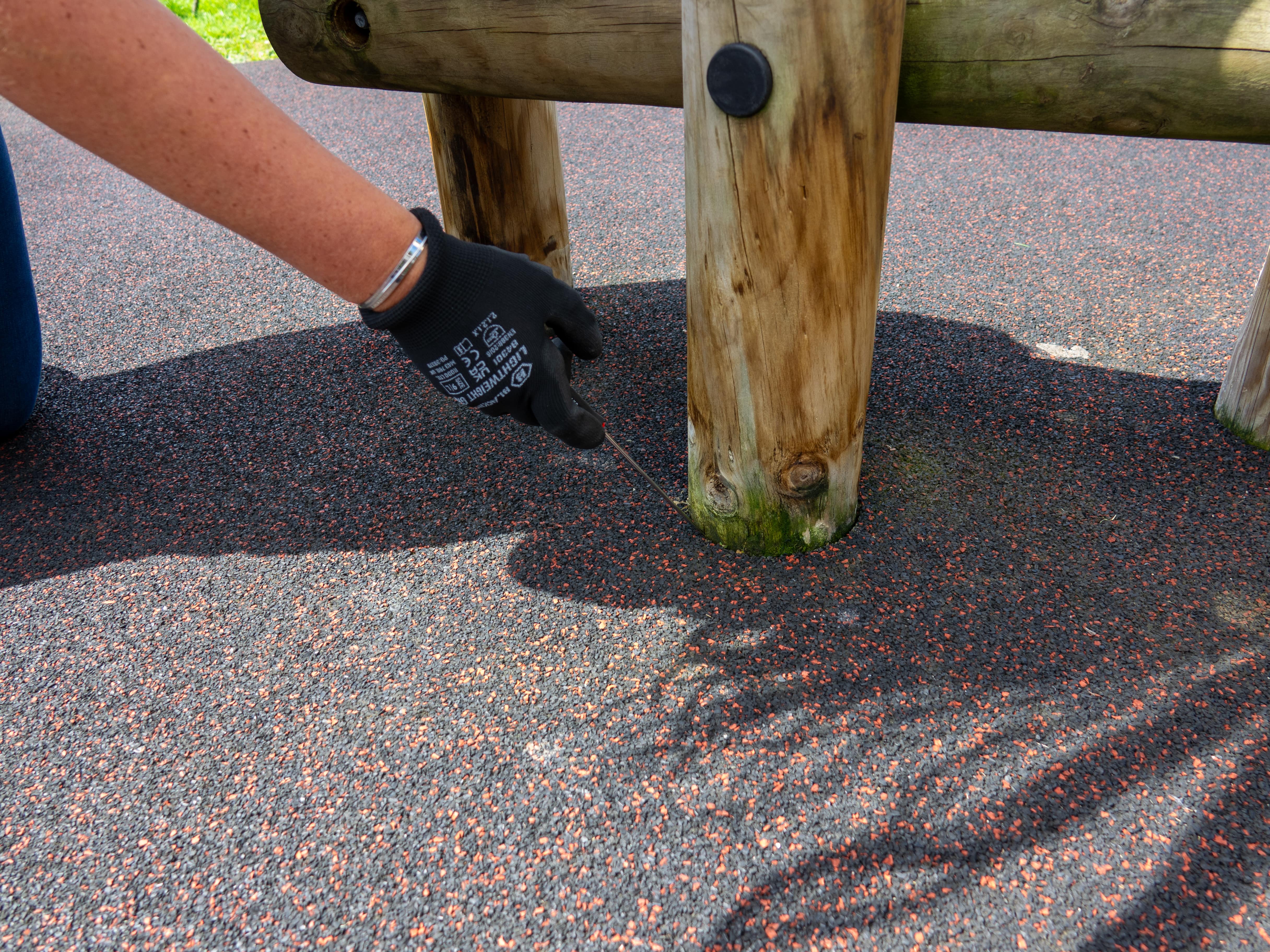
Cleaning and sanitising play surfaces and equipment are crucial for maintaining hygiene and preventing the spread of germs.
Safety features, such as fencing and surfacing, must be regularly checked and maintained to ensure they provide adequate protection for the children. Landscaping and vegetation upkeep are also important to keep the play area attractive and safe.
When equipment becomes worn or damaged, timely replacement is necessary to prevent accidents and ensure the play area remains functional.
By investing in regular maintenance and support, not only can schools stop the most common playground maintenance problems occurring, but schools can ensure the safety and well-being of their students, extend the lifespan of play equipment, and maintain the aesthetic appeal of the play area.
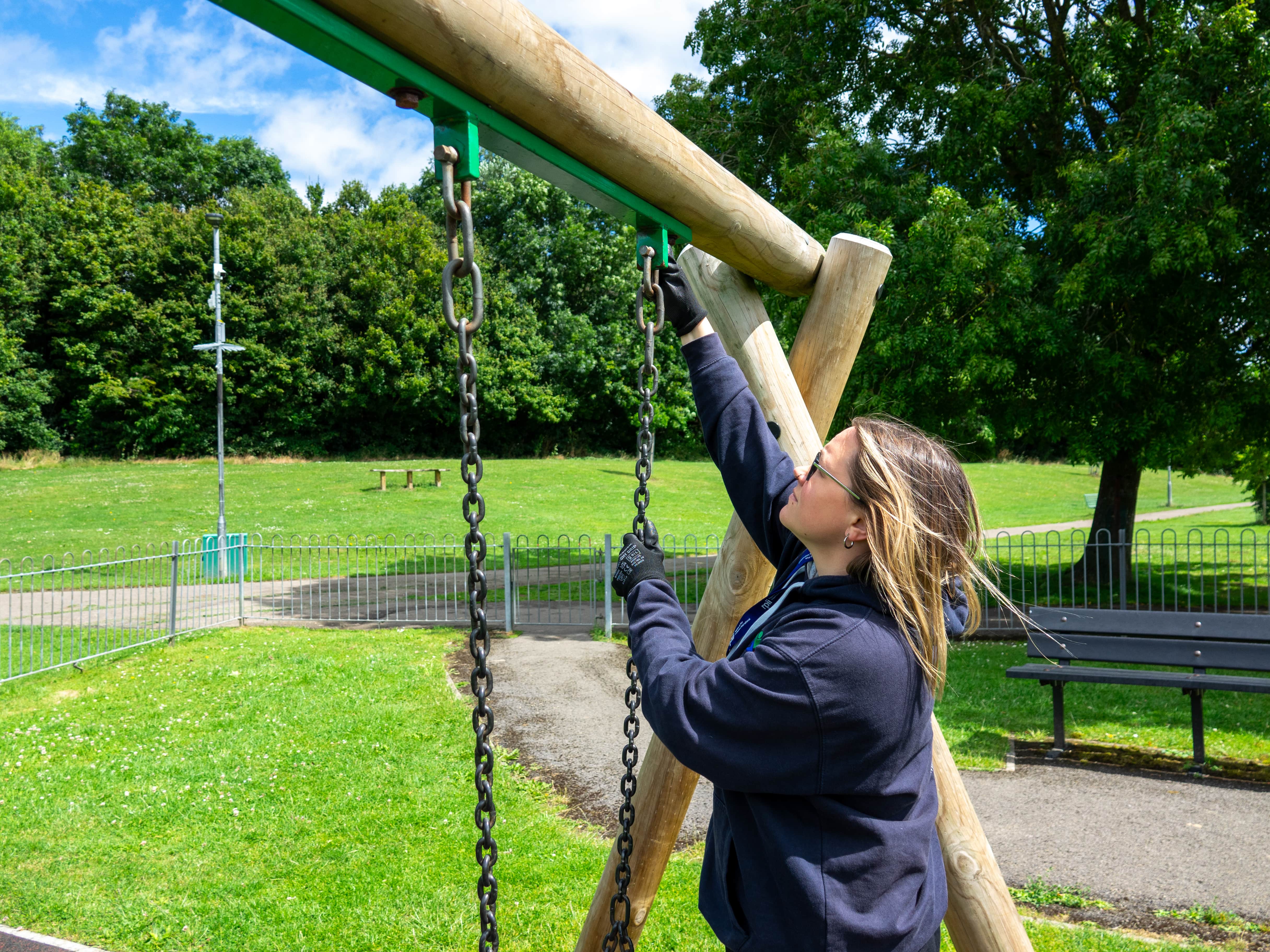
This proactive approach supports the overall health and well-being of students, creating a safe and engaging environment for play.
The Importance of Maintenance Services
Maintenance services are a critical component of school playground equipment management. By partnering with a reputable maintenance provider, schools can ensure compliance with safety regulations and standards, reducing the risk of accidents and injuries.
Regular maintenance services help extend the lifespan of play equipment, ensuring that it remains safe and functional for years to come.
A well-maintained play area improves the overall appearance and appeal of the school playground, making it a welcoming space for students. Maintenance services can include annual inspections and reports, routine cleaning and sanitising, repair and replacement of worn or damaged equipment, and upkeep of safety features and landscaping.
Additionally, training and support for school staff and maintenance personnel can help ensure that the playground remains in top condition. However, it can be difficult teaching your maintenance staff playground safety standards and what they need to know.
If you're looking for RPII-accreddited playground inspectors to help, then check out our playground inspections and maintenance service.
By prioritising maintenance services, schools can create safe, engaging, and well-maintained play areas that support the health, well-being, and education of their students. Investing in high-quality maintenance services is an investment in the future of the children, providing them with a safe and enjoyable environment to learn and play.



